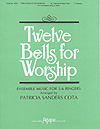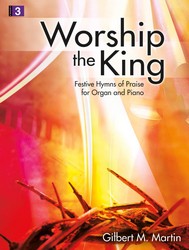- |
User Links
105
As With Gladness Men of Old
Hymn Information
- First Line
- As with gladness men of old
- Author
- William C. Dix (1860, alt.)
- Tune Name
- DIX
- Composer
- Conrad Kocher (1838)
- Adapter
- William H. Monk (1861)
- Composer (descant)
- Sydney H. Nicholson (1944)
- Topic
- Church Year: Epiphany
Copyright Information
- Text Copyright
- Public Domain
- Tune Copyright
- Desc. © The Royal School of Church Music · Tune and adapt. Public Domain
- Reprint/Projection Information
- Words and Music: The Words and Music are in the Public Domain; you do not need permission to project or reprint the Words and Music.
- Descant: the descant is copyrighted by The Royal School of Church Music; use with a OneLicense.net or a CCLI license.
Full Text
Scripture References
Further Reflections on Scripture References
Taking Matthew 1: 1-11 as his theme for stanzas 1-3, William C. Dix likens the journey of the wise men who came to worship the Christ to our own Christian pilgrimage. The pattern of these stanzas is "as they … so may we." Stanzas 4 and 5 are a prayer that our journey on the "narrow way" may bring us finally to glory where Christ is the light (Rev. 21:23) and where we may perfectly sing his praise.
This text by William C. Dix, an insurance executive, was inspired by the Epiphany gospel of Matthew 1:1-11. He offers the pattern “as the wise men – so may we,” and ultimately invites us to finish our journey in the “glory where Christ is the light.”
Bert Polman
105
As With Gladness Men of Old
Call to Worship
Everlasting God,
you brought the nations to your light
and kings to the brightness of your rising.
Fill the world with your glory,
and show yourself to all the nations,
through him who is the true light
and the bright morning star,
Jesus Christ, your Son, our Lord,
who lives and reigns with you and the Holy Spirit,
one God, now and forever. Amen.
14 Gracious God, you led the Magi by a star and brought them to Jesus.
Lead us to Jesus, and help us to worship you.
Help us to offer you gifts of abundance and gratitude.
Show us the lengths that you go to draw us close.
Help us to see how your light shines in every corner of the world,
leading people of every tribe, language, and nation
to offer homage to the one light of the world,
our Lord Jesus Christ. Amen.
[The Worship Sourcebook]
—
Worship Sourcebook Edition Two
Blessing/Benediction
Now to God who is able to strengthen you
according to my gospel and the proclamation of Jesus Christ,
according to the revelation of the mystery
that was kept secret for long ages but is now disclosed,
and through the prophetic writings is made known to all the Gentiles,
according to the command of the eternal God,
to bring about the obedience of faith—
to the only wise God, through Jesus Christ,
to whom be the glory forever! Amen.
—Romans 16:25-27, NRSV
—
Worship Sourcebook Edition Two
As we leave this service of worship,
let us go as the Magi left the infant Jesus,
rejoicing on our way that we have seen the living Lord,
ready to return to our daily life and work,
spreading the good news of Jesus the Christ.
Receive now these words of promise and blessing
from our Lord Jesus Christ:
Remember, “I am with you always, to the end of the age.”
“Peace I leave with you; my peace I give to you.
Do not let your hearts be troubled.
Do not be afraid.
I am the light of the world.
Whoever follows me will never walk in darkness
but will have the light of life.
As the Father has loved me, so I have loved you.
Abide in my love.”
Thanks be to God.
And let all God’s people say:
Amen.
—from Matthew 28:20; John 14:27; 15:8; 8:12
[The Worship Sourcebook]
—
Worship Sourcebook Edition Two
Additional Prayers
Gracious God, you led the Magi by a star and brought them to Jesus.
Lead us to Jesus, and help us to worship you.
Help us to offer you gifts of abundance and gratitude.
Show us the lengths that you go to draw us close.
Help us to see how your light shines in every corner of the world,
leading people of every tribe, language, and nation
to offer homage to the one light of the world,
our Lord Jesus Christ. Amen.
[The Worship Sourcebook]
—
Worship Sourcebook Edition Two
Let us praise God for the
manifestation of the Christ in his mission on earth.
Let us praise God for the Magi from the east,
who were sent to Bethlehem
to teach us to honor him
and to offer our gifts.
We praise you, O God.
Let us praise God for the multitudes around the world
who are today using the resources of their customs and cultures
in developing new forms of worshiping the Christ.
We praise you, O God.
Let us praise God for all those
who are presenting themselves to be baptized in the name of Christ
and for all the parents who are bringing their children to the water of Christ.
We praise you, O God.
Let us praise God for the manifestation of Christ in our own time
when the thirsty are given something to drink and the hungry are fed.
We praise you, O God.
Let us pray for Christ’s continuing epiphany
among all who long for his presence.
For your manifestation among all who long for truth
and are educated and wise in this world,
for those who conduct research and those who teach,
for those who study the stars
and those who give counsel to kings and rulers,
we seek your grace, O wisdom of God.
For your epiphany among all who are open
to your presence in the water and the wine,
and especially among those who have seen your star
but have not yet heard your name,
we seek your grace, O Savior of the nations.
For your epiphany
among all who are suffering for the cause of righteousness,
for all who are in prison,
for those who are oppressed,
and for those who are hungry, thirsty, and homeless,
we seek your grace, O Son of God.
For your manifestation of your glory
in the course of our daily lives,
in our homes, our schools, our workplaces,
and our facilities for play and entertainment,
we seek your grace, O Lamb of God.
In your name, Amen.
[Reformed Worship 13:39]
—
Worship Sourcebook Edition Two
105
As With Gladness Men of Old
Hymn Story/Background
Inspired by the Epiphany gospel, Matthew 1:1-11, William C. Dix wrote this text in 1858 while recuperating from illness. The text was first published in A. H. Ward's Hymns for Public Worship and Private Devotion (1860). The following year it was published in both Dix's Hymns of Love and Joy and Hymns Ancient and Modern.
—
Bert Polman
Author Information
Most British hymn writers in the nineteenth century were clergymen, but William C. Dix (b. Bristol, England, 1837; d. Cheddar, Somerset, England, 1898)was a notable exception. Trained in the business world, he became the manager of a marine insurance company in Glasgow, Scotland. Dix published various volumes of his hymns, such as Hymns of Love and Joy (1861) and Altar Songs: Verses on the Holy Eucharist (1867). A number of his texts were first published in Hymns Ancient and Modern (1861). Another popular hymn by Dix is 'What Child Is This."
An early form of the tune DIX was composed by Conrad Kocher (b. Ditzingen, Wurttemberg, Germany, 1786; d. Stuttgart, Germany, 1872). William H. Monk created the current form of DIX by revising and shortening Conrad Kocher's chorale melody for “Treuer Heiland, wir sind hir,” found in Kocher's Stimmen aus den Reiche Gottes (1838). Monk's tune was published with Dix's text in the 1861 edition of Hymns Ancient and Modern, of which Monk was music editor. Dix regretted the use of this tune for his text, but the combination has proven a good match–"As with Gladness" is the most popular Epiphany hymn today.
DIX is a simple bar form tune (AAB) with a wavelike contour in each of its three lines. Sing in three long lines rather than six short ones in order to reflect the longer phrases of the text. Sing stanzas 14 in unison or in harmony. In stanza 5 add the descant from Sydney H. Nicholson's Royal School of Church Music collection Music for Boys’ Voices (1944).
—
Bert Polman
Composer Information
An early form of the tune DIX was composed by Conrad Kocher (b. Ditzingen, Wurttemberg, Germany, 1786; d. Stuttgart, Germany, 1872). Trained as a teacher, Kocher moved to St. Petersburg, Russia, to work as a tutor at the age of seventeen. But his love for the music of Haydn and Mozart impelled him to a career in music. He moved back to Germany in 1811, settled in Stuttgart, and remained there for most of his life. The prestigious Cotta music firm published some of his early compositions and sent him to study music in Italy, where he came under the influence of Palestrina's music. In 1821 Kocher founded the School for Sacred Song in Stuttgart, which popularized four-part singing in the churches of that region. He was organist and choir director at the Striftsckirche in Stuttgart from 1827 to 1865. Kocher wrote a treatise on church music, Die Tonkunst in der Kirche (1823), collected a large number of chorales in Zions Harfe (1855), and composed an oratorio, two operas, and some sonatas.
—
Bert Polman
Sydney H. Nicholson (b. St. Marylebone, London, England, 1875; d. Ashford, Kent, England, 1947) was an organist and church music educator who greatly influenced English hymnody. Educated at Oxford's New College, the Royal College of Music in London, and in Frankfurt, Germany, he became organist at several famous cathedrals, including Westminster Abbey (1919-1928). Nicholson founded and administered the School of English Church Music at Chislehurst in 1927; this important institution, with branches throughout the English-speaking world, was renamed the Royal School of Church Music in 1945. Located in Canterbury after World War II, its headquarters were moved to Addington Palace, Croydon, in 1954. Nicholson was music advisor for the 1916 Supplement of Hymns Ancient and Modern and prepared the way for its 1950 edition. He wrote Church Music: a Practical Handbook (1920) and Quires and Places Where They Sing (1932) and composed operettas, anthems, and hymn tunes. In 1938 he was knighted for his contributions to church music.
—
Bert Polman
Suggestions or corrections? Contact us


 My Starred Hymns
My Starred Hymns







